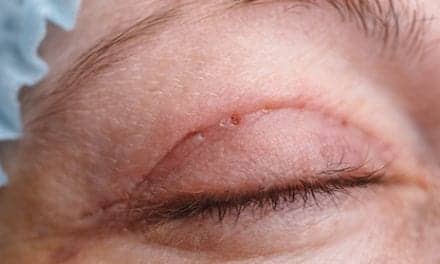Today’s prospective patients are more likely to turn to their virtual friends on social networking sites for advice on facial plastic surgery then their actual ones, according to new 2011 survey results released by the American Academy of Facial Plastic and Reconstructive Surgery (AAFPRS).
Forty two percent of patients said they got most of their information about plastic surgery from social media, an increase from 29% in 2010. At the same time, the percentage of patients who got the scoop on plastic surgery from friends dipped to 48%, down from 63% in 2010. The majority of surgeons surveyed also reported that 70% of their patients request procedures by describing the area of concern such as “raccoon eyes” or “acne scars” rather than requesting a specific product or procedure by name.
“We are encouraged by the possibilities that Facebook, Twitter and other social channels offer for prospective patients, but urge all patients to exercise caution in researching facial plastic procedures to ensure information is from a reliable source,” says AAFPRS President Tom D. Wang, MD, in a news release. “There’s a great deal of misinformation out there, and the best way to circumvent that is to consult an AAFPRS physician who is qualified, experienced and trained in performing facial plastic procedures.”
According the 2011 statistics, non-surgical procedures performed by AAFPRS surgeons in 2011 remained steady, but still outnumbered the amount of surgical procedures performed. The survey results also showed that 63% of procedures performed were cosmetic versus reconstructive procedures.
Other survey highlights include:
- The average costs of both surgical and non-surgical procedures decreased in 2011. Only otoplasty and facial implants increased in cost. On the non-surgical side, there was a minimal increase in the average cost of superficial chemical peels.
- The most common non-surgical procedures last year were Botox and hyaluronic acid injections, while the number of poly-l-lactic acid injections and fat injections increased slightly. Rhinoplasties, ablative skin resurfacings, blepharoplasties and facelifts topped the list of facial surgeries in 2011.
- For the third consecutive year, women outranked men in every category for both surgical and non-surgical procedures except for hair transplants.
- Age also played a factor in surgery selection. Women under age 35 opted for less invasive procedures. The most common non-surgical procedures for women under age 35 were Botox injections, hyaluronic acid injections, chemical peels, and microdermabrasion
- Facelifts, blepharoplasty, ablative skin resurfacing, rhinoplasty and lip augmentation were the most common surgical procedures performed on women of all ages, while Botox, hyaluronic acid injections and microdermabrasion were the most common non-surgical procedures in women overall.
- Rhinoplasty continued to be the most common surgical procedure performed on both women and men under the age of 35.
- In addition to rhinoplasty, the most common surgical procedures for men were revision surgeries, hair transplants and blepharoplasties. Botox, hyaluronic acid injections, microdermabrasion and calcium hydroxyapetite were the most common non-surgical procedures performed among men. For men under 35, otoplasty and chin augmentation were the most performed surgical procedures after rhinoplasty.
- A quarter or more of facial plastic surgeons have seen an increase in the ethnic populations in 2011, with the number of Caucasian patients topping the list, increasing 37% from 2010. Surgeons also reported an increase in their Hispanic, Asian American and African American patients in 2011.
- Of the four different popular cosmetic surgeries, African Americans and Hispanics were most likely to have received rhinoplasty , Asian Americans were most likely to have received blepharoplasty or rhinoplasty, while Caucasians were more likely to get rhinoplasty followed by facelifts.
- While more patients appear to be gleaning information on plastic surgery from social media, only 14% of surgeons in 2011 saw an increase in requests for “celebrity procedures” such as Angelina Jolie’s lips.
- Surgeons also reported that patients are split in their concern regarding the results and cost when making the decision to undergo facial plastic surgery.
Source: The American Academy of Facial Plastic and Reconstructive Surgery


